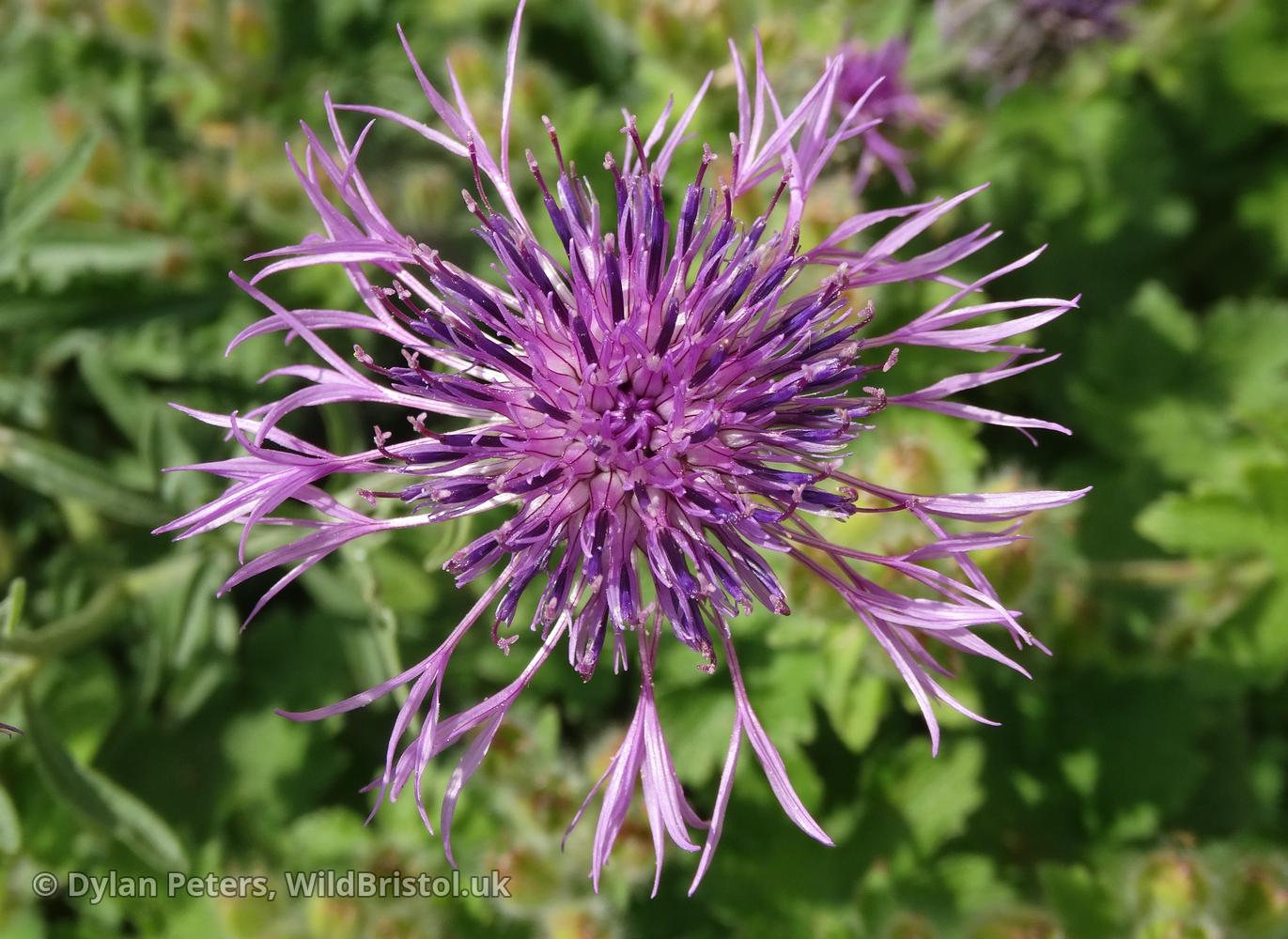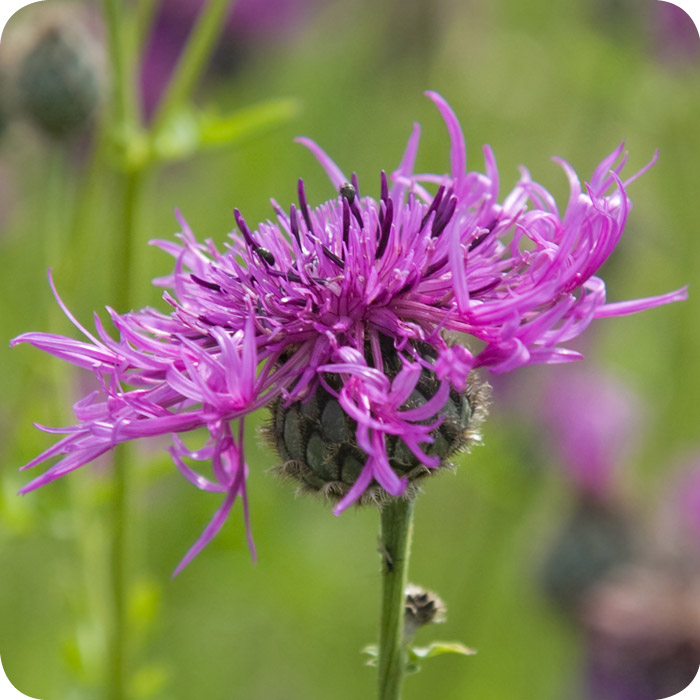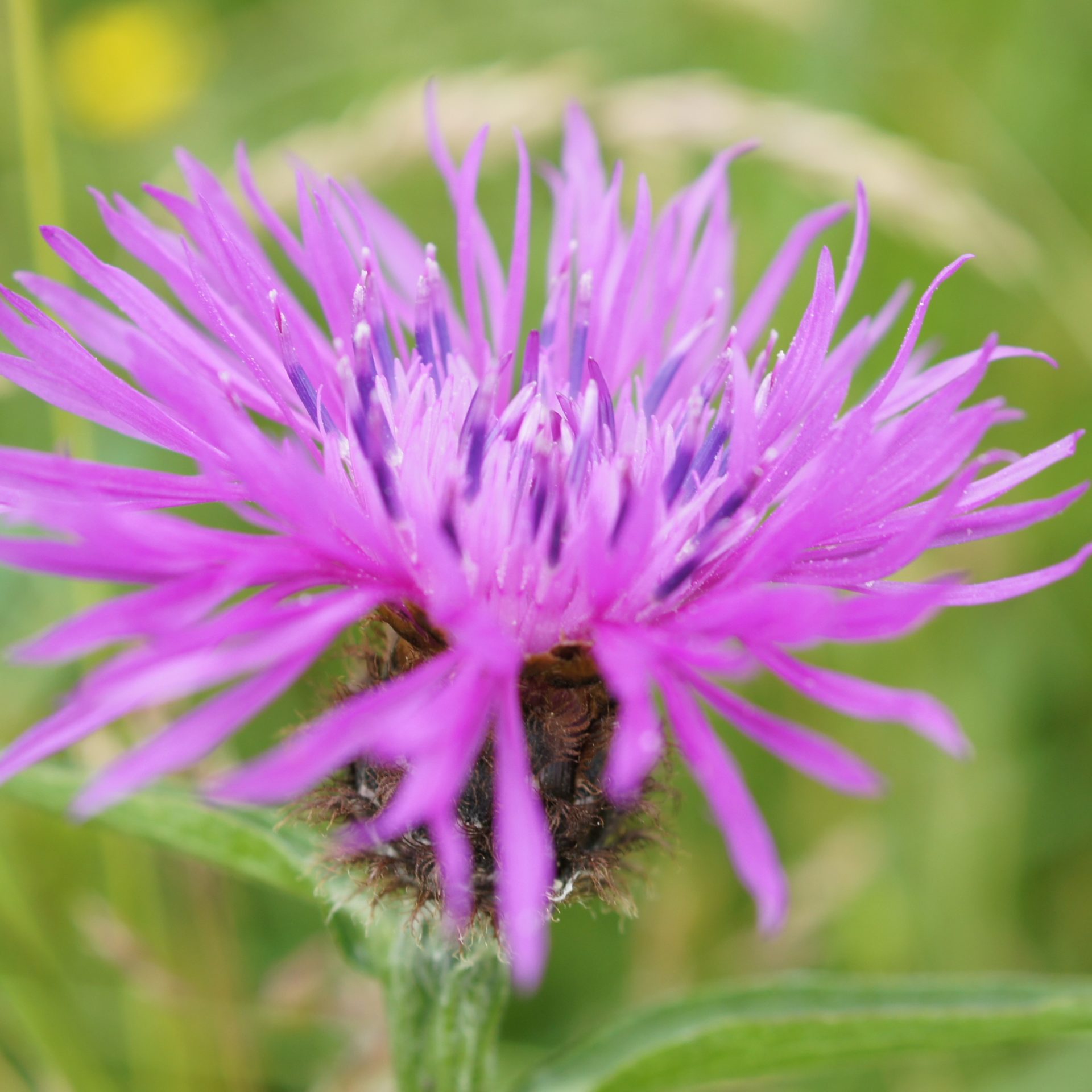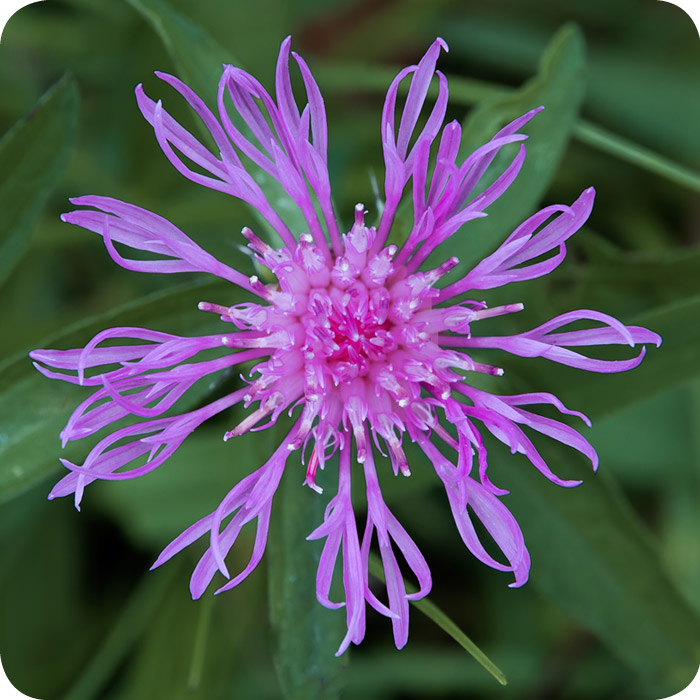
Buy greater knapweed Centaurea scabiosa
Thriving on neglect, Centaurea scabiosa (Greater Knapweed) is an upright perennial with large purple, thistle-like flower heads, 2 in. wide (5 cm), adorned with prominent outer florets from mid-summer to early fall. Attracting bees, butterflies, and other admirers, the bold blossoms appear atop sturdy stems above the foliage of pinnately lobed leaves.

Greater Knapweed, Centaurea scabiosa Flowers NatureGate
Greater Knapweed. -. Centaurea scabiosa. Click here to support NatureSpot by making a donation - small or large - your gift is very much appreciated. Thank you. Medium to tall robust somewhat bristly plant to 1.5 metres. Stems erect, branched above. Leaves usually pinnately lobed with oblong or linear segments.
Rufino Osorio Centaurea scabiosa Greater Knapweed
Greater knapweed is an attractive addition to the flower border and will grow much larger in the garden than in the wild. Like its close relatives in the huge daisy family, this species is very valuable to bees.. Centaurea scabiosa (Greater knapweed) Select a garden project to check if this is the right plant for the garden conditions.

Greater Knapweed (Centaurea scabiosa) 5 Wildflower Plants from Woolmans
Knapweed seedlings growing with others in a seed tray. Collect knapweed seed when brown and ripe and sow on bare, moist soil where plants are to grow, covering with a thin layer of soil. Or allow plants to self-seed and transplant the young seedlings to their final planting position. Divide established clumps whilst dormant, any time from.

Greater Knapweed (Centaurea scabiosa) Species WildBristol.uk
A perennial with finely bristly erect grey-green stems, Greater Knapweed grows up to 1.2m in height and its upper part branches freely. Knapweeds are readily distinguished from thistles by the absence of spines and prickles. Greater Knapweed leaves are alternate, stalked, dark green and slightly leathery; mostly they are pinnately lobed (but.

Wildflowers Greater Knapweed, Centaurea scabiosa
Centaurea scabiosa (Greater Knapweed) is a species of perennial herb in the family Asteraceae. They have a self-supporting growth form. They have simple, broad leaves and achenes. Flowers are visited by Didea fasciata, Syrphid fly, Cheilosia bergenstammi, and hedge brown. Individuals can grow to 0.72 m.

Cornflower, knapweed Centaurea scabiosa or greater knapweed blue flower growing in the field
Centaurea scabiosa or greater knapweed is a perennial plant of the genus Centaurea. It is native to Europe and bears purple flower heads.

Greater knapweed (Centaurea scabiosa) Plantlife Shop
Centaurea scabiosa, or greater knapweed, is a perennial plant of the genus Centaurea. It is native to Europe and bears purple flower heads. Greater knapweed is found growing in dry grasslands, hedgerows and cliffs on lime-rich soil. Upright branched stems terminate in single thistle-like flowerheads, each having an outer ring of extended.

Greater Knapweed (Centaurea scabiosa) Photograph by Science Photo Library Fine Art America
Greater knapweed is a thistle-like plant that can be found on chalk downlands, roadside verges, woodland rides, hedgerows and clifftops. It is more restricted in its distribution than its close relative, Common knapweed, being found mainly in England on chalky soils. It is in bloom from June to September and is a huge favourite of all kinds of.

Greater Knapweed (Centaurea scabiosa) Photos, Diagrams & Topos SummitPost
Centaurea stoebe: involucre 6-8 mm wide, the bracts with several prominent longitudinal veins, and fertile flowers 12-15 mm long (vs. C. scabiosa, with the involucre 18-25 mm wide, the bracts lacking prominent longitudinal veins, and fertile flowers 20-25 mm long).

Greater Knapweed (Centaurea scabiosa) Grote centaurie Greater, The Good Place, Flickr
Centaurea Scabiosa, also known as Greater Knapweed, is a perennial plant that belongs to the family Asteraceae. It is native to Europe and Asia and can grow up to 1.5m tall. The plant has a long flowering period, from June to September, and produces vibrant purple-pink flowers that attract bees and butterflies. Taxonomic Information

Greater Knapweed (Centaurea scabiosa) plug plants Cumbria Wildflowers
RHS Botanical Art and Photography Show 14 June - 7 July 2024 RHS Botanical Art and Photography Show

Centaurea Scabiosa Greater Knapweed Stock Photo Download Image Now Backgrounds, Beauty
Greater Knapweed, also known as Centaurea scabiosa, is a herbaceous perennial plant that is native to Europe and Western Asia. The plant produces large, showy flower heads that are 3-5 cm in diameter with purple petals arranged in a star-like pattern.

Greater knapweed (Centaurea scabiosa) plants for bees and butterflies
Centaurea scabiosa, or greater knapweed, is a perennial plant of the genus Centaurea. It is native to Europe and bears purple flower heads.

Greater Knapweed (Centaurea scabiosa) plug plants
Greater Knapweed (Centaurea scabiosa) A tall purple-flowering plant, Greater Knapweed may be found growing on dry grassland, woodland tracks, and roadsides in calcareous (alkaline) soils in the Southern and Eastern areas of the UK. The long green stems each with a large (thistle like) flower can be seen June - September, and attract many.

Centaurea scabiosa (Greater Knapweed) 11b white form f… Flickr
Centaurea scabiosa is a PERENNIAL growing to 0.9 m (3ft). See above for USDA hardiness. It is hardy to UK zone 4. It is in flower from July to September, and the seeds ripen from August to October. The species is hermaphrodite (has both male and female organs) and is pollinated by Bees, flies, Lepidoptera (Moths & Butterflies). The plant is self-fertile.